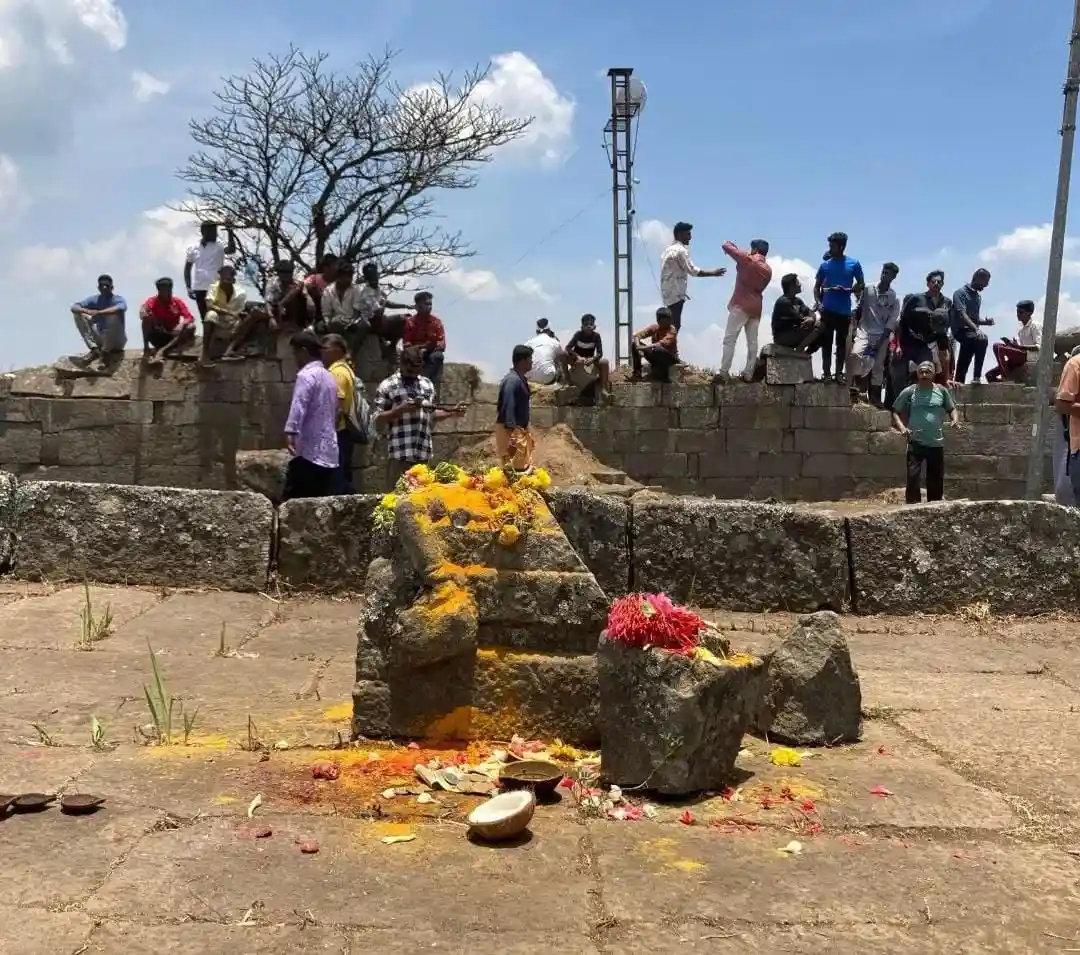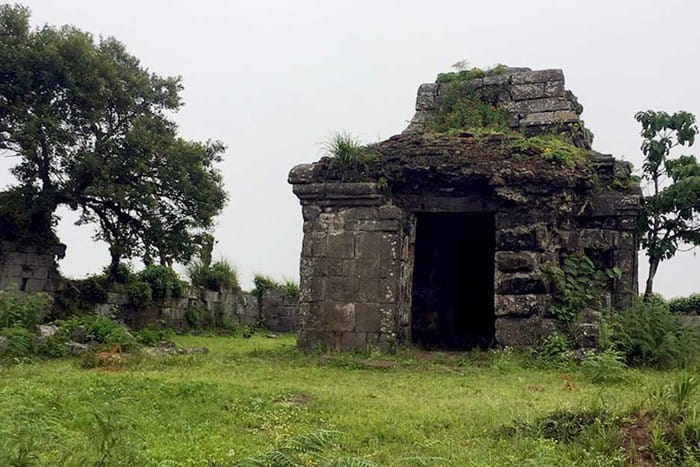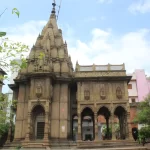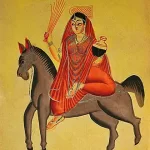Mangaladevi Temple, There’s this old gem of a temple in the Idukki district near Kumali – the Mangaladevi Temple. What’s unique? It opens its doors to devotees just once a year on Chitra Pournami. And boy, when it does, crowds of worshippers, visitors, and even history buffs pour in! One of Kerala’s oldest temples, this place is loaded with legends and traditions. The temple is dedicated to Kannaki, the fiery heroine of the epic Cilappatikaram. Located about 15 kilometers from the famous Periyar Tiger Reserve, it’s a must-visit spot with a vibe that’s truly something else.
This temple sits right on the Tamil Nadu-Kerala border, so naturally, there’ve been some clashes between the two states over it. To keep things smooth, the district collectors and cops from Teni and Idukki handle the entire show during the big day. And oh, the temple’s perched at a height of 1337 kilometers above sea level – quite the lofty spot, isn’t it?
ALSO READ: Kashiraj Kali Temple: A Heritage Marvel
Mysteries of Mangaladevi Temple: A Legacy of Legends and History
Nobody really knows the exact age of this temple. But folks believe it was built by Cheran Chenkuttavan somewhere around 2000 to 2500 years ago. Ilango Adigal, who wrote the epic Cilappatikaram, was around during the time of this Chera king. They say the temple was built right where Kannagi came back after she burned down Madurai city in her fiery rage.

Discovering the Ancient Grandeur of Mangaladevi Temple
This temple is built old-school, using square granite stones, and the vibe is totally ancient. It’s up on a hill right inside the Periyar Reserve Forest, surrounded by pure greenery. There are four granite temple complexes, and the whole eastern side is just dense forest. Out of the two entrances, one’s completely out of use, all blocked by bushes, shrubs, and massive trees. The main walkway is on the north side. But the real showstoppers? Those four giant pillars! They’re about 10 feet tall, square-shaped, and an absolute must-see.
There are only two main pujas done at the four temple complexes. One’s for Shiva, and the other’s for Mangala Devi. One of the complexes isn’t in use, and there’s a smaller shrine where the deity Ankaleshwari is worshipped. The biggest temple of the lot is at Kovi, dedicated to Lord Shiva. And here’s the thing—Shiva’s idol is unmovable, like it’s there for eternity.
The temple’s got an enclosure wall about 80 feet long, 30 feet wide, and 12 feet high, all made of rectangular stone blocks with beautiful carvings. Both the north and south entrances are designed with crazy precision—like every detail is spot on.
Exploring the Unique Sculptural Art and Sacred Traditions
The damage to the idols’ heads doesn’t take away from their vibe. Along the circular path, you’ll find carvings of a tiger, a peacock, and a Shivalinga that looks like it’s lactating milk—pretty fascinating stuff! Then there are these two dragons, about 2 feet tall and 3 feet long, on either side of the stairs leading to the main temple. But here’s the cool part: from one angle, they look like elephants!
The style of these sculptures has a clear Chinese touch. Back in the day, this famous sculpture design made its way from China to Madurai and ended up blending beautifully with Indian art.
This shrine stands all by itself, separate from the other temples. It’s a simple one-room setup—no gopura doors or fancy pavements. Devotees can get real close to the god, almost within arm’s reach, but there’s a stone wall keeping them and the deity apart. The same setup is there in Kannaki’s temple too.
The silver idol of Kannaki, or Mangala Devi, stands as a symbol of reverence. The big tradition is that on the full moon day of the Chaitra month, devotees bring this idol all the way from Kamba to the temple.
Controversy, Tradition, and Devotion
No one really knows why this temple, tucked away deep in the forest and left unoccupied, ended up in ruins. Parts of the shrine and even the statue were broken, making it unclear which deity it was originally meant for. After generations of abandonment, the Tamil Nadu folks claimed it in the 1980s, sparking a big debate since the spot technically lies inside Kerala’s borders.

Finally, they made a truce—now, priests from both Tamil Nadu and Kerala temples perform puja here on Chitrapournami day.
Mangaladevi’s Chitrapournami celebration is super popular. Every year, about 25,000 people—including visitors and enthusiasts—show up for it. Special pujas happen from 6 am to 4 pm, and the entry to the temple is through the Periyar Wildlife Sanctuary.
Private cars? Not allowed. Devotees either walk the 15 km stretch or hop on specially approved taxi jeeps to reach Mangaladevi. Since it’s part of the Periyar Tiger Reserve, the Forest Department keeps a close watch on everything. The Ganapathi-Bhagavathy Temple Trust in Kumali, Tamil Nadu, manages the whole event under the Kannaki Trust.
Conclusion
This temple creates a one-of-a-kind vibe that happens only once a year, and Chaitrapournami attracts a packed crowd because of it. The festival of Goddess Mangala is all about celebrating nature. The whole experience is different, with Bhakti (devotion) hitting differently in the cool, calm forest. It’s like nature itself is softly chanting the praises of Mangaladevi, creating an atmosphere you can feel deep down.

